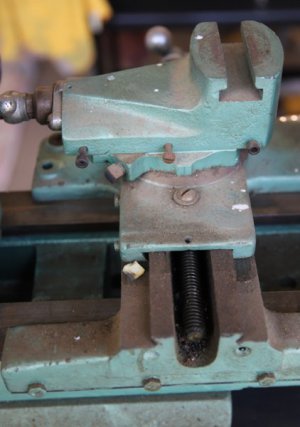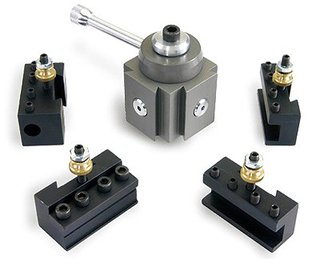Yes, I missed that. None of the compound gib screws are original. They should look like the four on the cross slide, except a size smaller.
It is unlikely that they will need replacing as the steel ones usually last forever. But if you do, I have the steel gibs available, new manufacture. The factory switched to plastic ones in the 1970's, one of the few mistakes that they made.
The stud, knurled thumb nut, light spring washer, and hex nut on the top of most QC tool holders are for setting the cutter height.
One problem with making you own QC, or one of them, is that of the #101 or #102, you will need several. Which adds to the time expended. The reason that you will need several is that with only one, you lose a large advantage or the QC over the lantern type holder. A typical job might call for one turning cutter, one facing cutter and one beveling or chamferring cutter. Every time that you needed to change cutters, you would have to go through the setup procedure to get the new cutter on center. So you aren't much better off than without a QC. Counting some 101XL's, I have around 15 of them. Pretty much anything that I need to do, I just grab the holder with the appropriate cutter.


